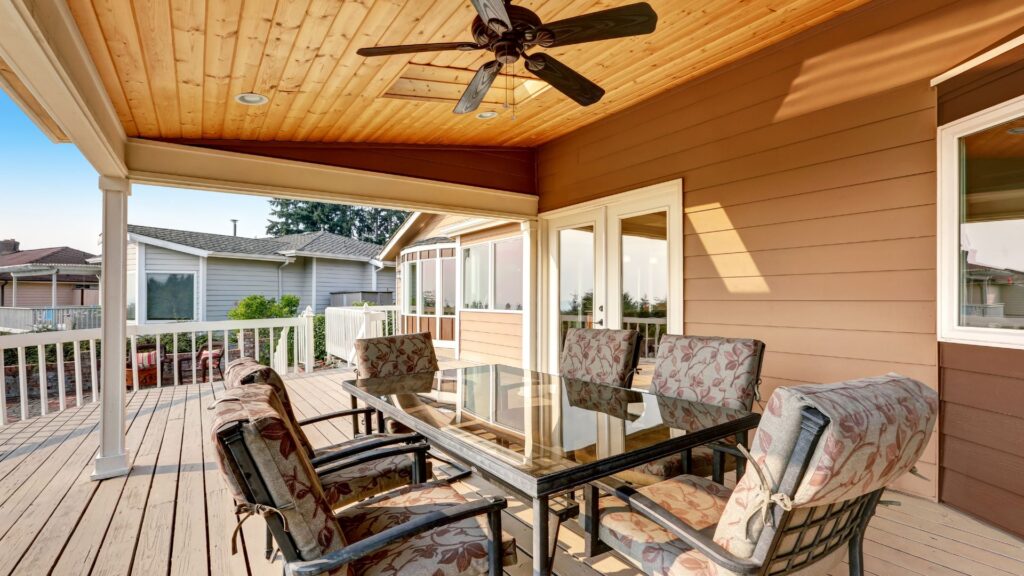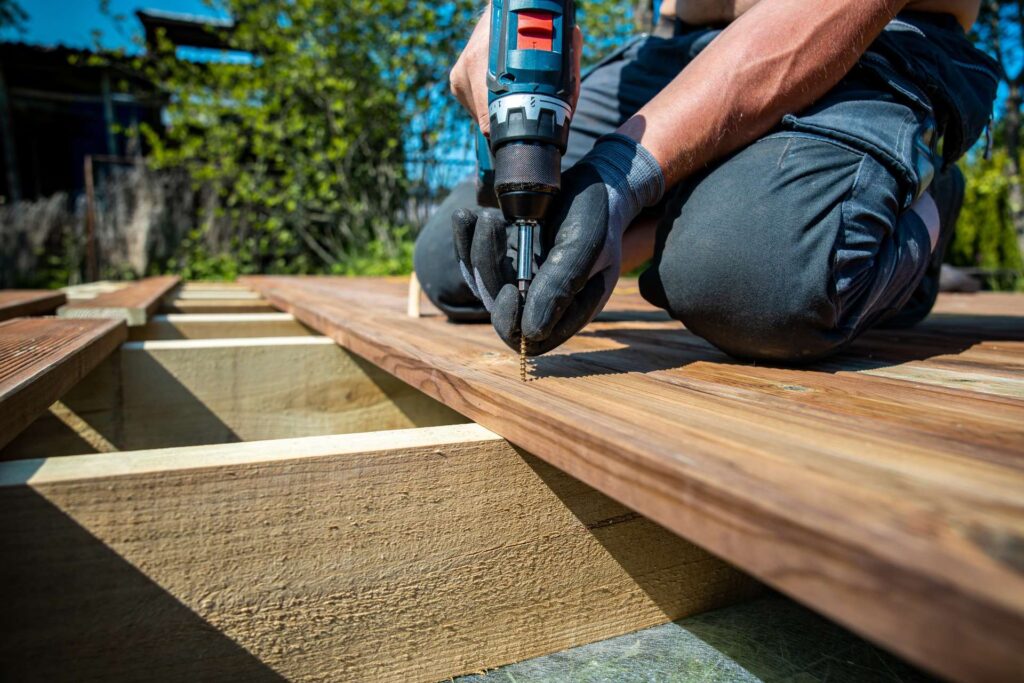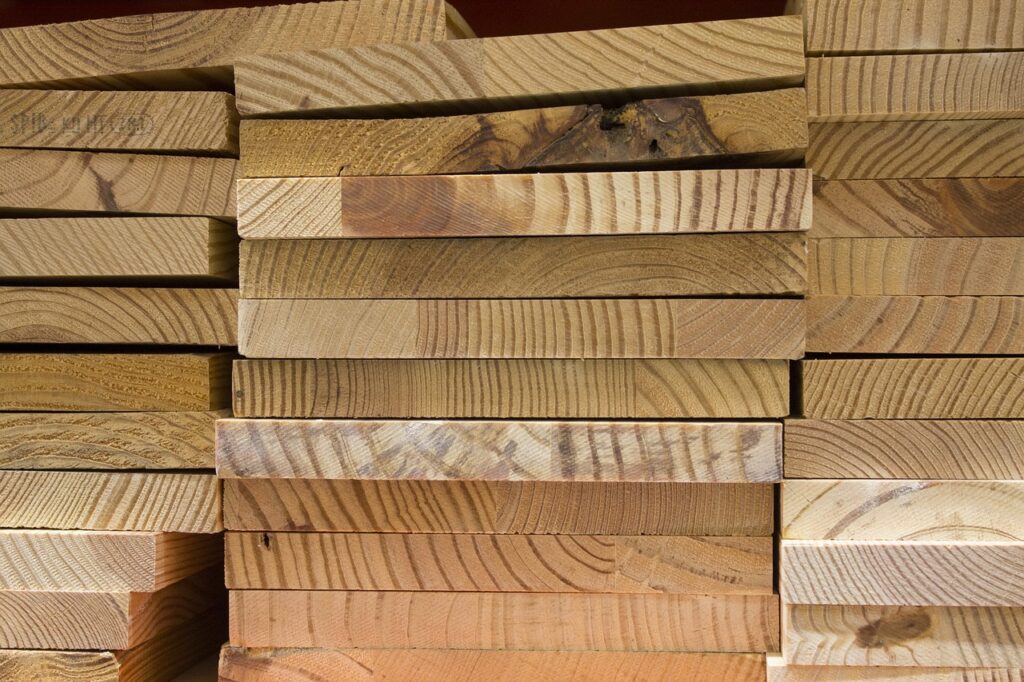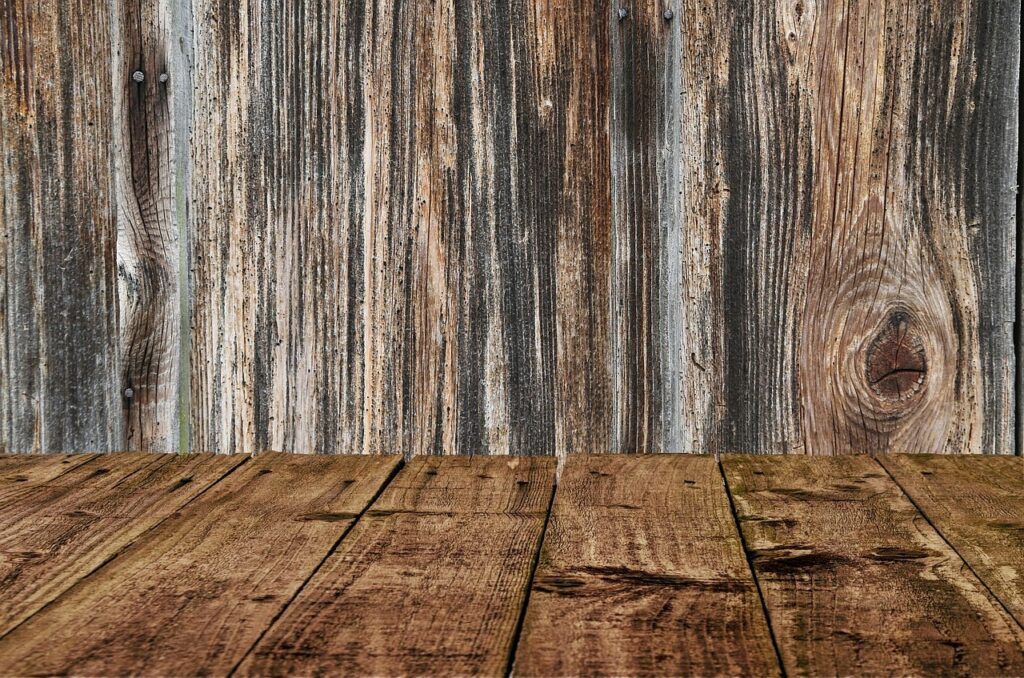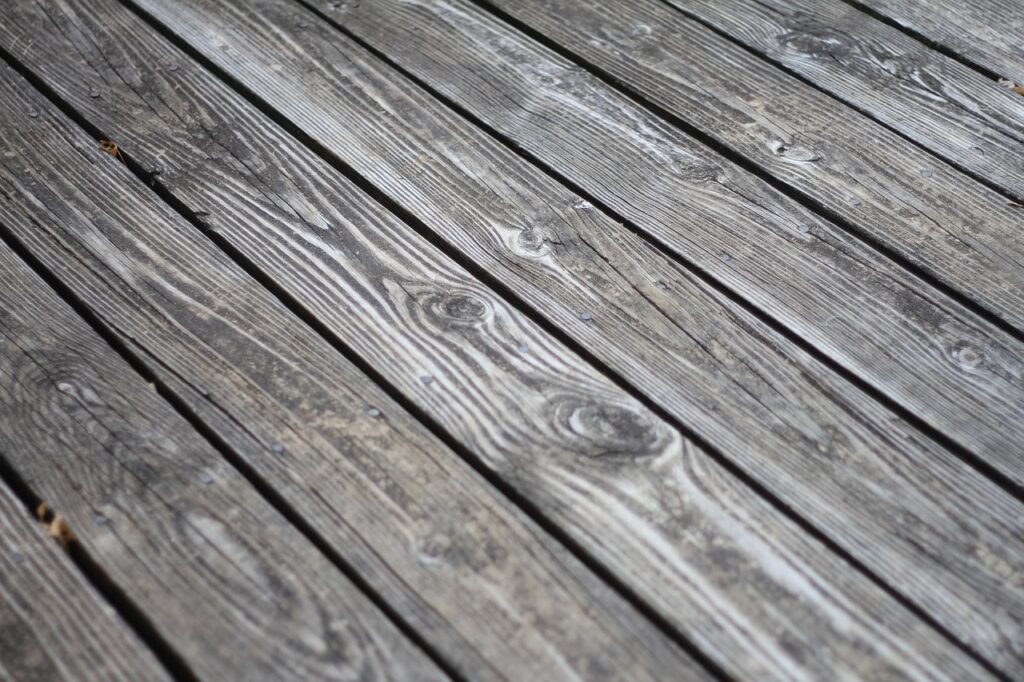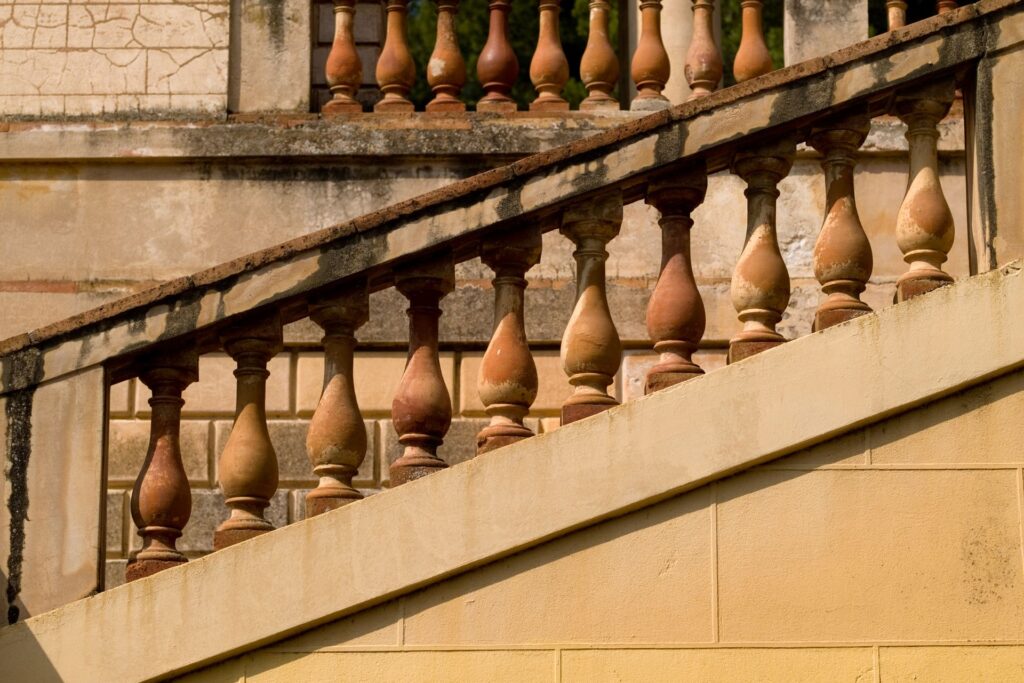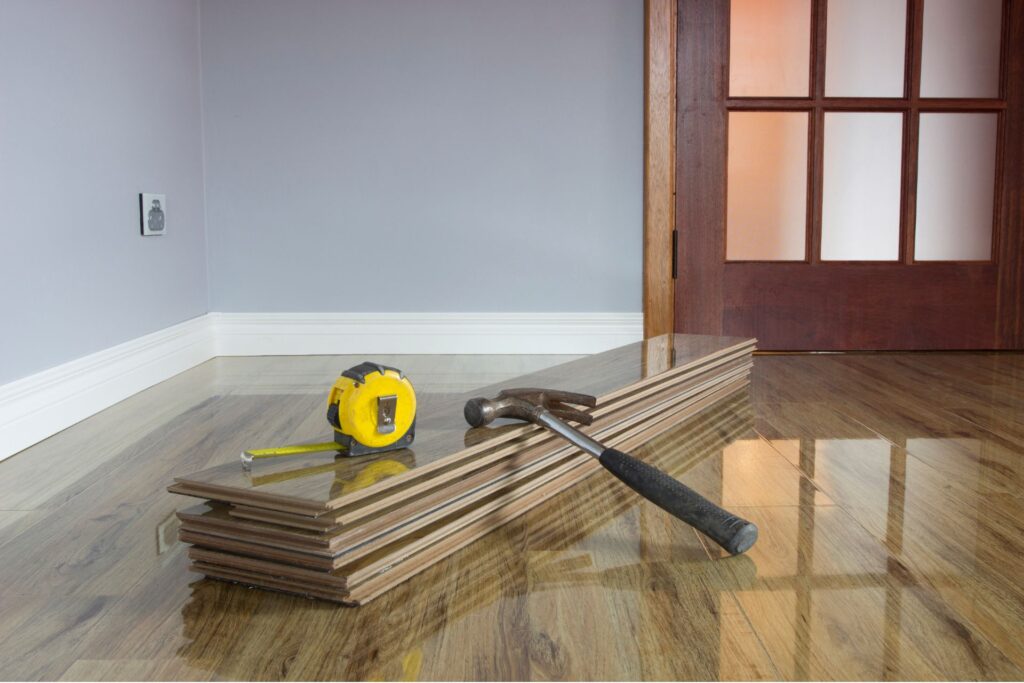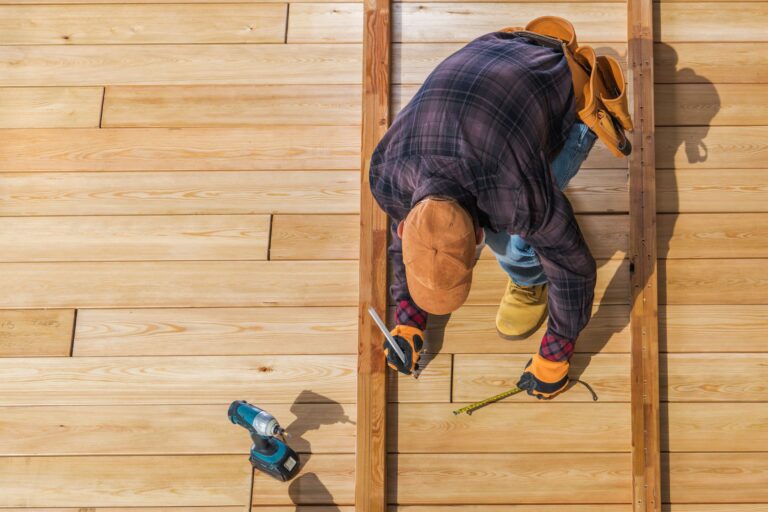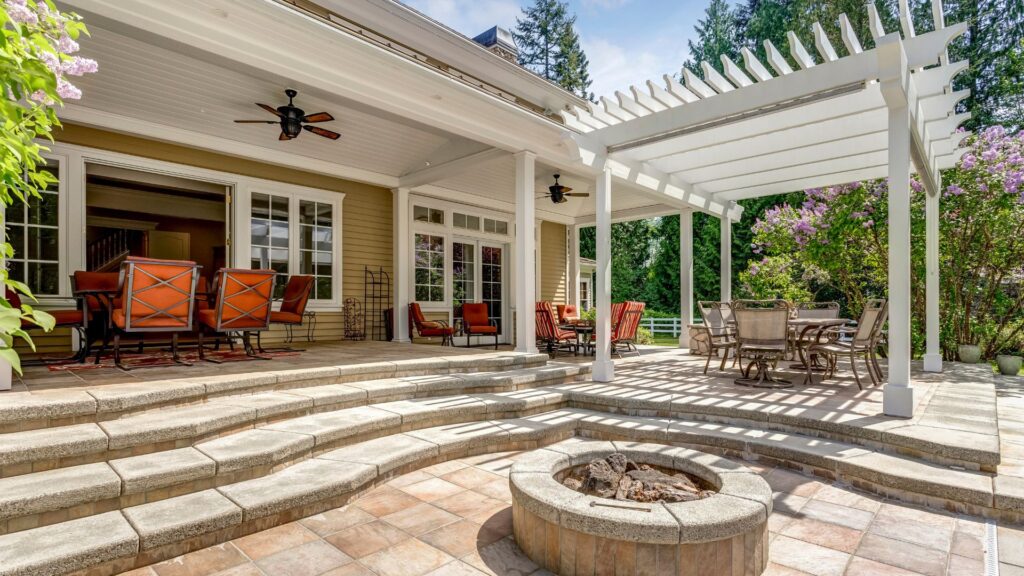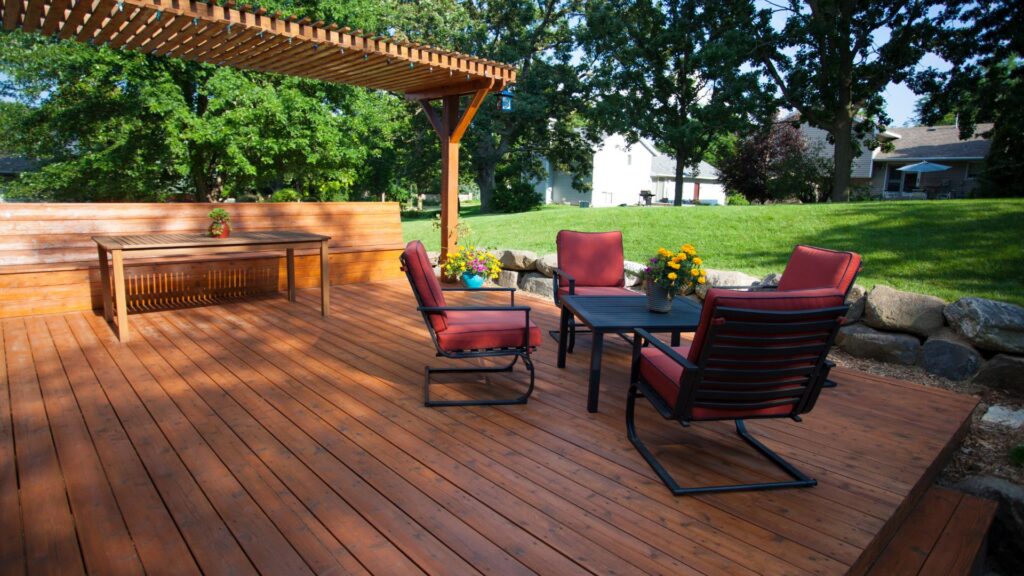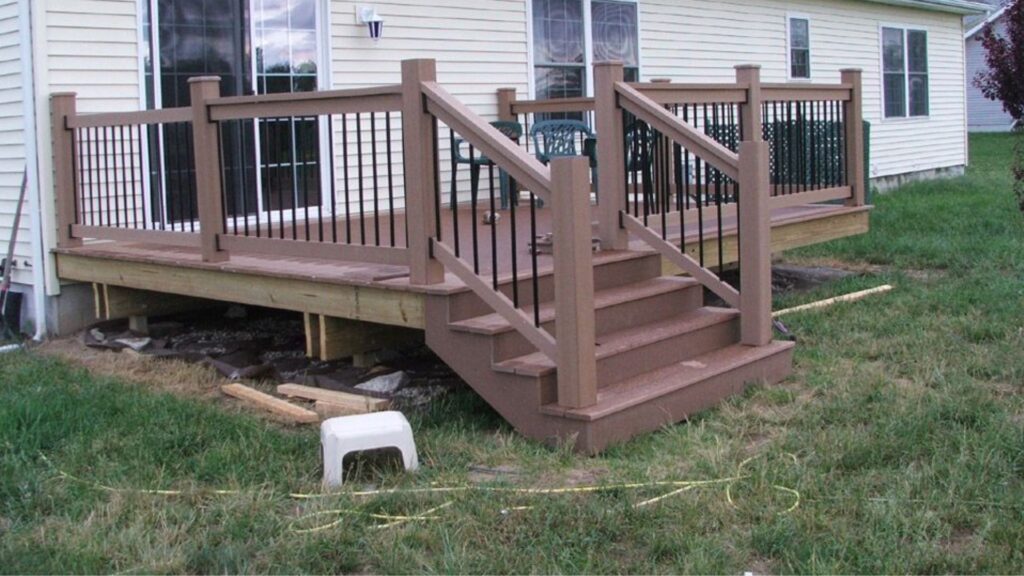Welcome to the ultimate guide on composite decking in New Zealand, where we’ll explore why this durable, low-maintenance option is becoming a top choice for Kiwi homeowners looking to transform their outdoor spaces. In a country known for its diverse climate, from heavy rainfalls to intense UV exposure, composite decking offers a long-lasting, eco-friendly alternative to traditional timber decking. Whether you’re renovating your backyard or building a new deck, this guide will walk you through everything you need to know—from the benefits and costs to design tips and top brands in NZ—ensuring you make the best decision for your home and lifestyle.
Composite decking in New Zealand is a popular alternative to traditional timber decking, made from a blend of recycled wood fibers and plastic. It offers durability, low maintenance, and resistance to the harsh NZ climate, including rain, humidity, and UV rays. Composite decking comes in a variety of colors and textures, providing a sustainable and eco-friendly option for homeowners looking to enhance their outdoor spaces with a long-lasting, visually appealing solution.
- What Is Composite Decking?
- Why Choose Composite Decking In New Zealand?
- Composite Decking Vs. Timber Decking: Which Is Better?
- Top Brands For Composite Decking In New Zealand
- Cost Of Composite Decking In NZ
- How To Choose The Right Composite Decking For Your Home
- Installation Tips For Composite Decking
- Maintaining Composite Decking
- Real-Life Examples: Composite Decking Projects In NZ
- Is Composite Decking Right For You?
- FAQs: About Composite Decking NZ
- Conclusion
- Find A Professional Decking Company Near You!
What Is Composite Decking?
Composite decking is a modern alternative to traditional timber decking, designed to offer homeowners a durable, low-maintenance solution for outdoor spaces. In simple terms, composite decking is a type of decking material made from a combination of wood fibers and recycled plastic. This blend creates a strong, long-lasting product that mimics the appearance of natural wood, without many of the drawbacks associated with timber.
Materials Involved in Composite Decking
The core materials that make up composite decking include a mix of recycled wood fibers (often sourced from sawdust or reclaimed wood) and plastic (usually from recycled polyethylene or polypropylene). This blend is carefully engineered to retain the warmth and texture of real wood, while the plastic component adds extra durability and resistance to the elements. As a result, composite decking provides a sustainable option by repurposing materials that would otherwise go to waste, while also reducing the demand for new timber.
Composite Decking vs. Traditional Wood Decking
When comparing composite decking to traditional wood decking, several key differences emerge. One of the most noticeable is in terms of maintenance. Wooden decks require regular staining, sealing, and repairs due to their vulnerability to weather, rot, and pests. Composite decking, on the other hand, is designed to be low-maintenance—there’s no need for annual sealing or staining, and it’s highly resistant to moisture, termites, and UV damage.
Another significant difference lies in the longevity of the material. While wooden decks can warp, splinter, and deteriorate over time, especially in New Zealand’s harsh weather conditions, composite decking is much more resilient. It maintains its shape and appearance for years with minimal upkeep. Additionally, composite decking doesn’t splinter, making it a safer option for families with young children or pets who frequently use outdoor spaces.
Sustainability, Durability, and Aesthetic Appeal
One of the primary reasons composite decking has gained popularity in New Zealand is its combination of sustainability, durability, and aesthetic appeal. As a product made from recycled materials, it appeals to environmentally conscious homeowners looking to reduce their carbon footprint. It also contributes to deforestation prevention by lowering the need for newly harvested timber.
From a durability standpoint, composite decking outperforms traditional wood, particularly in climates like New Zealand’s, where humidity, rain, and intense UV exposure can take a toll on natural materials. Composite decking stands up to these conditions, resisting fading, cracking, and warping over time.
In terms of aesthetics, modern composite decking has come a long way. Manufacturers now offer a wide range of colors, textures, and finishes, allowing homeowners to choose a style that best matches their outdoor space. Whether you’re aiming for the rustic charm of natural wood or a sleek, contemporary look, composite decking can deliver the visual appeal you desire, all without the hassle of ongoing maintenance.
Composite decking is an ideal solution for Kiwi homeowners looking for a beautiful, eco-friendly, and long-lasting alternative to traditional timber decking. Its combination of wood and recycled plastic offers sustainability and strength, while its low maintenance requirements make it an attractive choice for busy lifestyles.
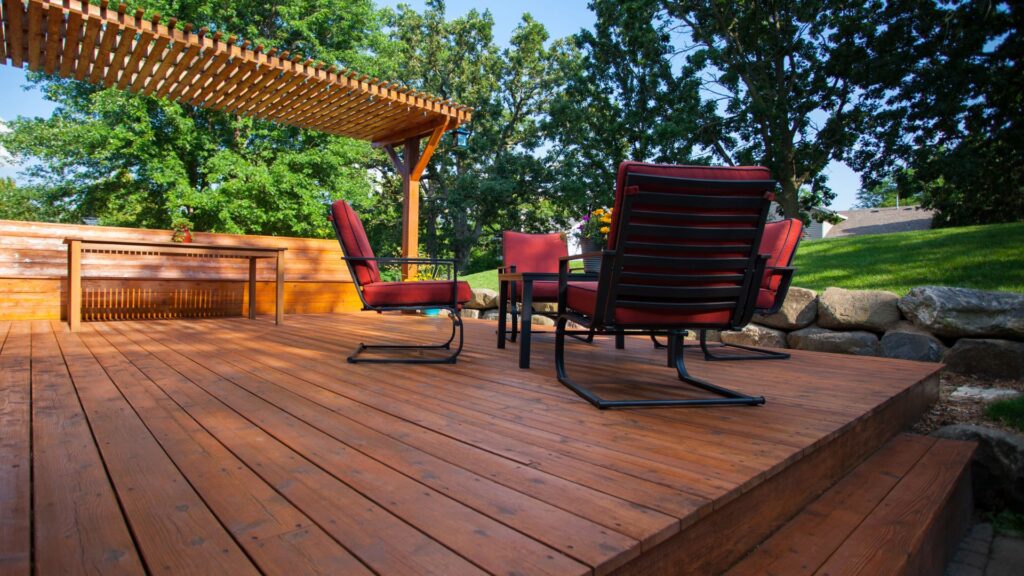
Why Choose Composite Decking In New Zealand?
Composite decking has quickly become a favorite among homeowners in New Zealand, and for good reasons. It offers a combination of durability, low maintenance, eco-friendliness, and design versatility that traditional timber decking simply cannot match. Let’s dive deeper into why composite decking is an ideal choice for homes in NZ.
Durability and Weather Resistance
New Zealand’s climate can be quite challenging for outdoor materials, with everything from heavy rains to high UV exposure, depending on where you live. One of the standout benefits of composite decking is its superior durability in these conditions. Made from a blend of wood fibers and plastic, composite boards are engineered to withstand extreme weather. Unlike timber, which can rot, warp, or crack when exposed to moisture, composite decking is highly resistant to water damage. This makes it especially valuable in areas with high rainfall or near coastal regions where saltwater exposure is a concern.
Additionally, New Zealand’s strong UV rays can cause timber decks to fade and require regular treatments, but composite decking is designed to resist fading and discoloration, maintaining its vibrant look for years. Its long lifespan and resistance to common issues like mold and mildew growth make it a reliable option, reducing the need for repairs or replacements.
Low Maintenance
Another major advantage of composite decking is its low-maintenance nature. Traditional wood decking requires regular upkeep, including sanding, staining, and sealing to protect it from the elements. This maintenance can be time-consuming and costly over the years.
In contrast, composite decking requires little to no effort to keep it looking its best. A simple clean with soap and water is usually enough to remove dirt and debris, and there’s no need for frequent sealing or staining. This feature is particularly appealing to busy homeowners or those who prefer to spend more time enjoying their outdoor space rather than maintaining it.
By choosing composite decking, you’re not just saving on long-term maintenance costs but also freeing up your weekends to actually relax on your deck rather than working on it. The ease of maintenance adds significant value, especially in regions of New Zealand where the climate can accelerate wear and tear on traditional timber.
Eco-Friendly Benefits
With increasing awareness of environmental sustainability, many homeowners are now prioritizing eco-friendly options when it comes to home improvements. Composite decking aligns with these values, as many brands use recycled materials in their production. The typical composite deck board consists of a mix of recycled plastic and reclaimed wood fibers, reducing the need for new timber and lowering plastic waste that would otherwise end up in landfills.
This means when you choose composite decking, you’re not only investing in a long-lasting product but also contributing to the reduction of environmental impact. For homeowners who are environmentally conscious, the use of recycled materials in composite decking is a significant benefit that traditional timber can’t offer. Plus, by reducing the need for chemical treatments and stains, composite decking further minimizes its ecological footprint.
Variety of Design Options
Aesthetics play a crucial role in any outdoor renovation, and composite decking doesn’t disappoint in this regard. One of the key reasons homeowners in New Zealand are drawn to composite decking is the sheer variety of design options available. Whether your home has a modern architectural style or a more traditional look, there’s a composite decking option that can complement your design vision.
Composite decking comes in a wide range of colors, from natural wood tones like warm cedar and rich mahogany to sleek, contemporary shades like grey and black. Beyond color, composite boards also offer different textures and finishes that can mimic the grain of real wood or provide a smooth, sleek surface, allowing homeowners to choose a finish that matches their personal preference.
Additionally, composite decking can be used for more than just floors. With various board widths and finishes, you can get creative with design elements like steps, borders, and even built-in seating. This flexibility gives homeowners in New Zealand the freedom to design their outdoor spaces exactly the way they want without compromising on durability or functionality.
Composite decking provides a winning combination of weather resistance, minimal upkeep, eco-friendliness, and versatile design options, making it a standout choice for New Zealand homeowners looking to invest in a long-lasting, attractive outdoor space. Whether you’re dealing with harsh UV rays or frequent rain, composite decking holds up remarkably well, saving you time and money in the long run while enhancing the aesthetic of your home.
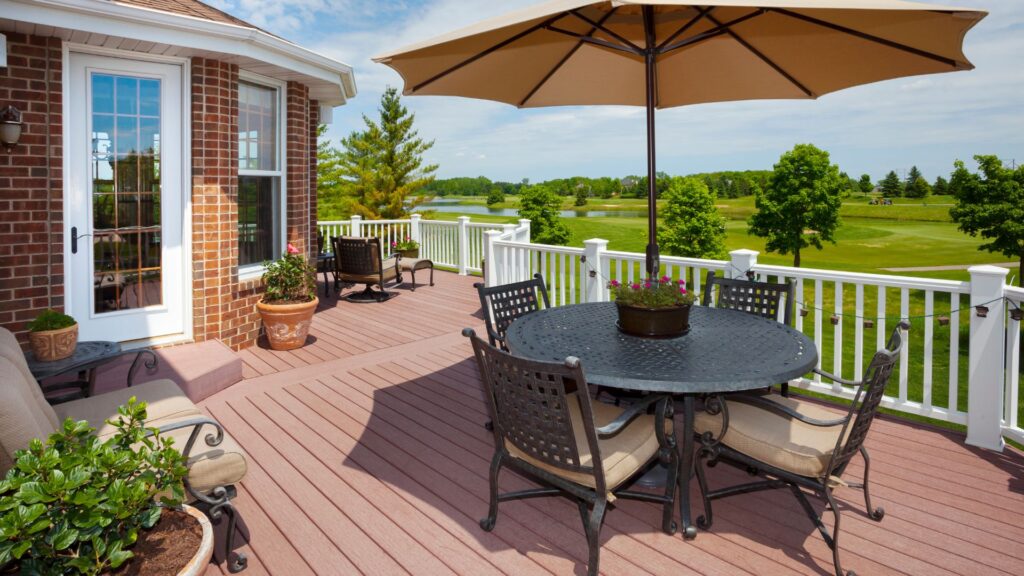
Composite Decking Vs. Timber Decking: Which Is Better?
When choosing between composite decking and traditional timber decking, there are several key factors that homeowners in New Zealand should consider. Both materials have their unique advantages, and the best choice often depends on your budget, long-term goals, and preferences. In this section, we will provide a detailed comparison of composite decking and timber decking based on four critical aspects: cost, durability, appearance, and environmental impact. Additionally, we will offer guidance on which option might be more suitable for different homeowners and outdoor projects.
Cost: Initial Investment vs. Long-Term Savings
One of the most important considerations when selecting decking material is the cost. Initially, composite decking tends to be more expensive than timber decking. The higher upfront price is due to the advanced manufacturing process and the premium materials involved, such as recycled wood fibers and plastic. Timber, especially softwoods like pine, is generally more affordable at the time of purchase.
However, the story doesn’t end with the initial cost. Composite decking offers significant long-term savings due to its low-maintenance nature. Unlike timber decking, which requires regular staining, sealing, and sometimes replacing damaged boards, composite decking is designed to be weather-resistant and does not need these recurring treatments. Over time, the maintenance costs for timber can add up, making composite decking a more cost-effective option in the long run. For homeowners looking for a hassle-free investment, composite decking is a strong contender.
Durability: Lifespan and Resistance to the Elements
Durability is another critical factor, especially in New Zealand, where decking is exposed to varying weather conditions, from strong UV rays in the summer to heavy rain in the winter. Composite decking excels in durability. It is resistant to moisture, rot, and termite damage—three common issues that plague traditional timber decking. This makes composite decking ideal for areas with high humidity or frequent rainfall, as it won’t warp or swell due to water exposure.
Timber decking, particularly when using hardwoods like cedar or kwila, can also be durable, but it requires regular maintenance to protect it from the elements. Without proper care, timber can become susceptible to rotting, splintering, and termite infestation. Additionally, timber can fade over time due to UV exposure, which means it may lose its aesthetic appeal unless it’s regularly stained or treated.
In terms of longevity, composite decking generally outlasts timber. Most composite decking products come with warranties of 25 years or more, while timber decking might last 10-15 years with consistent upkeep. If you’re looking for a long-lasting, low-maintenance solution, composite decking is often the better choice.
Appearance: Natural Aesthetics vs. Customization
One of the main reasons homeowners opt for timber decking is its natural beauty. The rich grains and textures of natural wood offer a classic, organic look that many people find appealing. Timber, especially hardwoods, provides a warm and authentic aesthetic that blends seamlessly into garden settings and natural landscapes.
However, composite decking has made significant advancements in appearance. Modern composite boards are available in a wide range of colors, textures, and finishes, many of which are designed to mimic the look of natural wood. This gives homeowners the flexibility to choose a style that suits their outdoor design, from sleek and modern to rustic and traditional. Furthermore, composite decking is customizable in ways that timber is not—it comes in a variety of shades, including grays, browns, and earthy tones, and some even offer reversible boards with different finishes on each side.
For homeowners who prefer the timeless charm of real wood, timber may be the preferred option. However, for those who prioritize color consistency, scratch resistance, and the ability to match specific design preferences, composite decking offers more versatility.
Environmental Impact: Sustainability and Eco-Friendliness
Sustainability is becoming a more significant consideration for many homeowners, and this is where composite decking shines. Most composite decking boards are made from recycled materials, such as reclaimed wood fibers and plastic. This reduces the demand for new timber and helps minimize the environmental impact. By using recycled content, composite decking helps divert waste from landfills and lowers the carbon footprint associated with the production of new materials.
On the other hand, timber decking, when sourced from responsibly managed forests, can also be considered environmentally friendly. However, the ongoing maintenance of timber decking requires chemical treatments like sealants, paints, and stains, which may have negative environmental consequences. Additionally, the deforestation required to meet the demand for timber can be a concern if the wood is not sourced sustainably.
For homeowners seeking an eco-friendly option, composite decking is generally the better choice. It promotes the use of recycled materials and requires minimal chemical maintenance, making it a greener solution for outdoor spaces.
Which Option is Right for You?
Ultimately, the decision between composite decking and timber decking comes down to personal preferences, budget, and the specific requirements of your project.
- For homeowners prioritizing long-term durability, low maintenance, and eco-friendliness, composite decking is the ideal choice. It may have a higher upfront cost, but the savings on maintenance and the longevity of the product make it a worthwhile investment.
- For those who value the natural beauty and warmth of real wood, and are willing to invest time and effort into regular maintenance, timber decking could be the better option. Timber’s organic look and feel are unmatched by composite materials, even with modern innovations in design.
Composite decking offers superior durability, low upkeep, and environmental benefits, making it the preferred option for many New Zealand homeowners. However, timber decking still has its place for those seeking a classic, natural aesthetic and who are prepared to maintain it over time. Consider your priorities, lifestyle, and outdoor design goals when making your decision.
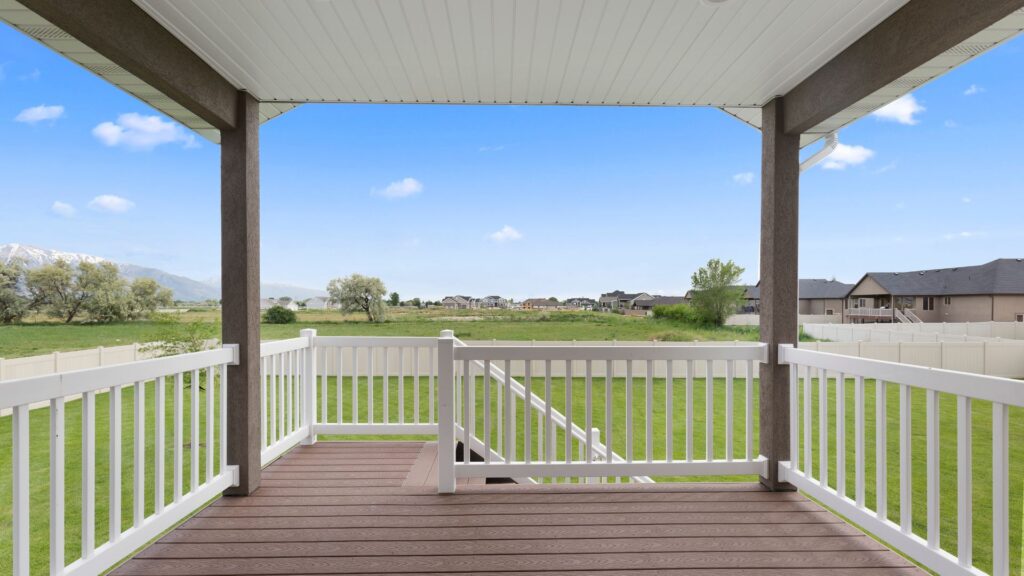
Top Brands For Composite Decking In New Zealand
When it comes to composite decking in New Zealand, choosing the right brand can significantly impact both the aesthetics and longevity of your outdoor space. With the growing demand for low-maintenance, durable decking options, several brands have emerged as top choices in the NZ market. Below, we’ll look at some of the leading composite decking brands available, along with their key features, price points, and customer feedback to help you make an informed decision.
1. Trex Decking
Trex is one of the most well-known names in composite decking worldwide, and it’s a popular choice in New Zealand as well. Trex offers a range of products that cater to different needs, from entry-level decking to high-end options.
- Overview: Trex decking is made from 95% recycled materials, including reclaimed wood and plastic. Its eco-friendly credentials make it an appealing choice for those looking to reduce their environmental footprint.
- Features: Known for its durability and resistance to fading, staining, and scratching, Trex is a low-maintenance option. The boards come in a wide variety of colors and finishes, allowing homeowners to match their decking to their outdoor design.
- Price Range: Trex’s pricing varies depending on the product line, but it typically falls in the mid to high range of composite decking options, making it a worthwhile investment for long-term durability.
- Durability: Trex products are known to withstand New Zealand’s harsh climate, particularly its UV resistance, which prevents fading in the sun. Trex also offers warranties of up to 25 years, ensuring longevity.
- Customer Feedback: Users in New Zealand often praise Trex for its easy maintenance and the aesthetic appeal of the finish. Many homeowners appreciate the wide range of color options and how well the decking holds up over time, even in coastal areas.
2. Millboard
Millboard is another premium composite decking brand that has gained popularity in the NZ market, particularly for homeowners seeking a luxury, natural wood-look finish.
- Overview: Millboard decking is unique in that it is made from a polyurethane resin rather than traditional wood-plastic composite. This makes it incredibly durable and water-resistant, ideal for homes near the coast or in areas with high rainfall.
- Features: Millboard is known for its realistic wood grain finishes, which give it the appearance of natural timber without the maintenance. It is slip-resistant and does not absorb moisture, making it a great option for poolside decking or homes in wetter regions of New Zealand.
- Price Range: As a premium brand, Millboard is on the higher end of the price spectrum. However, its longevity and the high-quality finish make it a worthwhile investment for those who prioritize aesthetics and performance.
- Durability: Millboard is highly resistant to mold, mildew, and fading, making it one of the most durable options available. Its polyurethane construction also makes it more resistant to damage from impact and scratches.
Customer Feedback: Homeowners love Millboard’s luxury appearance, often noting how closely it resembles real timber. While the price is higher, many believe the long-term benefits in terms of durability and maintenance-free care make it worth the cost.
3. Futurewood
For those seeking a more budget-friendly option, Futurewood offers affordable composite decking solutions without sacrificing quality.
- Overview: Futurewood is an Australian brand that has found a strong market in New Zealand. Their composite decking is made from recycled plastic and wood fibers, much like Trex, but with a focus on affordability.
- Features: Futurewood offers a variety of decking styles and colors to suit different outdoor designs. It is low-maintenance and resistant to termites, rot, and weathering.
- Price Range: Futurewood is known for offering more affordable pricing compared to some of the premium brands, making it a great option for homeowners on a budget. Despite the lower cost, it still offers good durability and aesthetics.
- Durability: While Futurewood may not have the same luxury finish as brands like Millboard, it is still durable and well-suited to New Zealand’s diverse weather conditions. It offers warranties of up to 10 years, providing reasonable protection against wear and tear.
- Customer Feedback: Users in New Zealand appreciate the affordability of Futurewood, especially for large decking projects where cost can quickly add up. Many customers find the product offers excellent value for money, though some note that it may not have the same high-end look as more premium options.
Choosing a Reputable Supplier or Installer in New Zealand
Selecting the right brand is only half the battle; ensuring that your composite decking is properly installed is equally important. Here are a few tips for choosing a reliable supplier or installer in New Zealand.
- Look for Accredited Installers: Many composite decking brands have certified or accredited installers who are trained to work with their specific products. Opting for these professionals ensures your decking is installed to the manufacturer’s standards, which can also help maintain your warranty.
- Check Reviews and References: Before committing to a supplier or installer, check online reviews and ask for references. Look for companies that have experience with composite decking installations in your area, especially in New Zealand’s unique climate conditions.
- Ask About Warranties: A reputable installer should offer a warranty on their workmanship in addition to the manufacturer’s product warranty. Be sure to clarify what is covered in case of any issues down the road.
- Compare Quotes: Get multiple quotes to ensure you are getting a fair price. However, don’t choose based on price alone—experience, expertise, and reviews should weigh heavily in your decision.
By considering top brands like Trex, Millboard, and Futurewood, along with choosing a reliable supplier or installer, you can ensure that your composite decking project not only looks stunning but lasts for years to come.
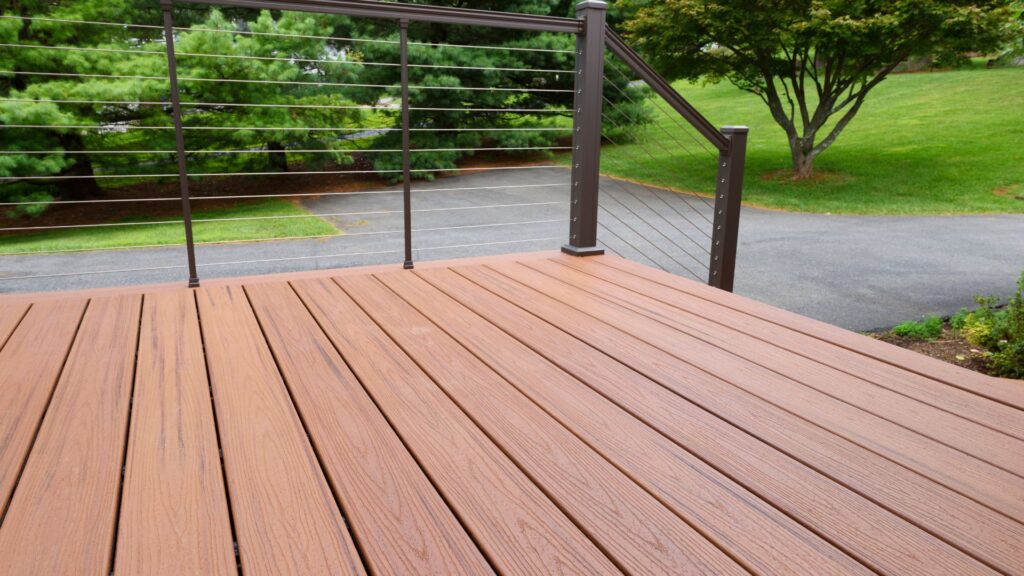
Cost Of Composite Decking In NZ
When it comes to planning an outdoor project like a deck, one of the key considerations for New Zealand homeowners is the overall cost of composite decking. While composite decking can have a higher upfront price than traditional timber, it offers long-term savings and benefits that make it a compelling choice for many. In this section, we’ll break down the costs associated with composite decking in NZ, including purchase price, installation fees, and long-term savings. We’ll also compare it with traditional timber decking to help you make an informed decision.
Breakdown of Composite Decking Costs
Initial Purchase Price
The price of composite decking varies depending on the brand, quality, and design features. On average, in New Zealand, composite decking can range between $100 to $200 per square meter. The price tends to fluctuate based on the grade of the decking material.
- Budget Options: Some entry-level composite decking products may cost around $100 to $150 per square meter. These options are typically more basic in design but still offer durability and low maintenance compared to timber.
- Mid-Range Options: Mid-tier composite decking, offering a balance of aesthetics and durability, usually costs between $150 to $180 per square meter. These products often come in a wider range of colors and finishes to suit different styles.
- Premium Options: High-end composite decking, known for superior quality, enhanced finishes, and better warranties, can cost upwards of $180 to $200 per square meter or more. These are often chosen for luxury home projects where long-term value and minimal upkeep are priorities.
Installation Costs
In addition to the material cost, you’ll need to factor in installation expenses. On average, installation fees for composite decking in NZ range from $50 to $100 per square meter. This price includes labor and the additional materials required for proper installation, such as fasteners, subframe, and other supports. Several factors can influence the final installation price.
- Deck Size and Complexity: Larger decks or those with complex designs, including multiple levels or intricate patterns, tend to have higher labor costs due to the extra time and skills required.
- Location and Site Preparation: If your site requires significant preparation, such as leveling the ground or removing an old deck, these can add to the installation cost.
- Professional vs. DIY: Hiring a professional installer ensures the deck is installed correctly, but it comes at a higher cost. DIY installation can save on labor fees, but mistakes can be costly, especially if you lack experience.
Long-Term Costs
One of the major advantages of composite decking is its low maintenance requirements, which translates to significant long-term savings. Unlike timber decking, composite doesn’t need regular staining, sealing, or sanding, reducing both the time and money spent on upkeep. The long-term costs of maintaining a composite deck are generally limited to occasional cleaning with soap and water to remove dirt and debris.
Here’s a comparison of the long-term costs of composite decking versus timber.
- Timber Decking: Timber decks require regular staining and sealing, typically every 1-2 years, to protect against the elements. This maintenance can cost hundreds of dollars annually, not to mention the labor involved if done DIY or the fees for hiring professionals.
- Composite Decking: Composite decking, on the other hand, only requires minimal cleaning, which saves homeowners money on maintenance supplies and labor. Over the lifespan of a deck, these savings can add up, making composite decking a cost-effective choice in the long run.
Comparing Composite Decking to Traditional Timber
When considering composite decking versus traditional timber decking, it’s essential to look at the overall investment, not just the upfront costs.
- Initial Investment: Timber decking generally has a lower initial purchase price, typically ranging from $60 to $120 per square meter, depending on the wood type. While this is more affordable upfront, it requires ongoing maintenance and care, which adds to the overall cost over time.
- Durability and Longevity: Composite decking outperforms timber in terms of durability. It is resistant to rot, pests, and moisture damage, which are common issues with timber decking in New Zealand’s humid and rainy climate. Timber decking, particularly in coastal regions, may require frequent repairs or replacement.
- Aesthetic Considerations: Timber has a natural beauty that appeals to many homeowners. However, composite decking has evolved, and now offers a range of colors and textures that closely mimic the look of wood, but without the associated maintenance. For homeowners who want the look of timber without the effort, composite is an excellent alternative.
- Environmental Impact: Composite decking is often made from recycled materials, making it a more environmentally friendly option. Timber decking, while natural, involves deforestation and the use of treatments that can be harmful to the environment.
While composite decking has a higher upfront cost, its long-term savings, durability, and minimal maintenance requirements make it a worthwhile investment for many New Zealand homeowners. By weighing these factors, you can determine whether composite decking is the right choice for your outdoor project.
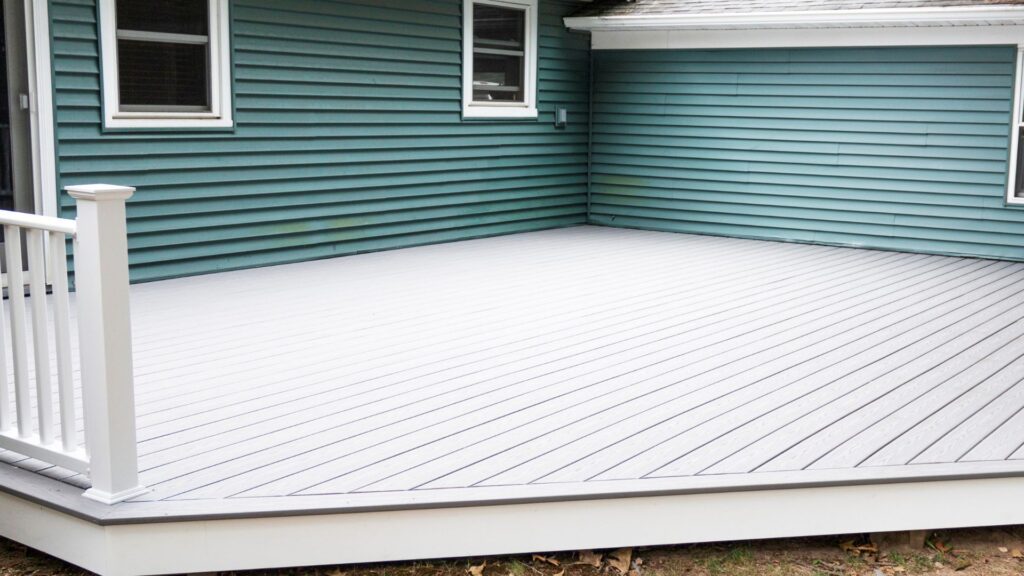
How To Choose The Right Composite Decking For Your Home
Choosing the right composite decking for your home can feel like a daunting task, especially with the variety of options available. However, by carefully considering your specific needs and preferences, you can make an informed decision that will enhance both the functionality and aesthetics of your outdoor space. Here are some key factors to keep in mind when selecting the best composite decking for your home.
Consider Your Outdoor Space
Before diving into the details of composite decking, it’s essential to evaluate the specific characteristics of your outdoor space. Start by thinking about the size of your deck—larger spaces may require a more substantial investment, while smaller decks allow for more flexibility in material choices. The style of your home is equally important. A modern home may benefit from sleek, minimalist decking, while a more traditional home might look best with natural wood textures. Also, consider the intended use of your deck. Will it primarily be a relaxing space for family gatherings, or do you plan to entertain large groups? Understanding how you’ll use the space will help guide your choice of materials and features, ensuring your deck serves both form and function.
Color and Texture Options
One of the standout features of composite decking is the variety of colors and textures available. Unlike traditional timber, which may require staining or painting to achieve the desired look, composite decking comes in a range of ready-made options. When choosing a color, consider how it will complement the exterior of your home and your surrounding landscape. Darker shades, such as deep browns or greys, can create a modern, elegant look, while lighter tones like beige or light wood are great for a more traditional or coastal vibe. Texture is another important consideration. Some composite decking mimics the look and feel of natural wood, with deep grain patterns, while others offer a smoother, more uniform appearance. If you want a rustic, natural feel, opt for textured boards with a wood grain finish. On the other hand, if you prefer a contemporary look, smoother finishes might be more appropriate.
Slip Resistance and Safety Features
Safety is a top priority, especially if your deck will be in a high-traffic area or frequently exposed to rain and moisture. Slip resistance is a crucial feature to look for, particularly in regions prone to wet weather, like many parts of New Zealand. Some composite decking products are designed with textured surfaces that increase traction, reducing the risk of slips and falls. If you have children, elderly family members, or pets, this feature becomes even more essential. Be sure to ask about the slip rating of the decking materials you’re considering, especially if the deck will be around pools or other wet areas.
Warranty and Lifespan
Investing in composite decking is a long-term decision, so it’s important to consider both the warranty and lifespan of the product. Most high-quality composite decking comes with warranties that cover anywhere from 10 to 30 years, offering protection against issues such as fading, staining, or structural damage. A longer warranty period often indicates a more durable product, but it’s essential to read the fine print. Some warranties may only cover certain types of damage or require specific maintenance procedures to remain valid. Beyond the warranty, think about the expected lifespan of the decking material. While traditional wood may need to be replaced after 10-15 years, composite decking can last 25 years or more with minimal maintenance. This makes it a smart investment for homeowners looking for durability and peace of mind.
Environmental Considerations
In an era where sustainability is becoming increasingly important, many homeowners are looking for eco-friendly options when choosing decking materials. One of the benefits of composite decking is that it often contains recycled materials, such as reclaimed wood fibers and plastic. When selecting a product, look for high recycled content percentages—this indicates that the manufacturer is committed to reducing waste and conserving natural resources. Some brands also focus on producing their decking with minimal environmental impact, using energy-efficient manufacturing processes. By choosing composite decking with a strong eco-friendly focus, not only are you making a more sustainable choice, but you’re also contributing to a greener future for your community.
Choosing the right composite decking involves a careful balance of aesthetics, functionality, and sustainability. By considering your outdoor space, the range of color and texture options, safety features, warranty terms, and environmental impact, you can select decking that perfectly suits your home and lifestyle.
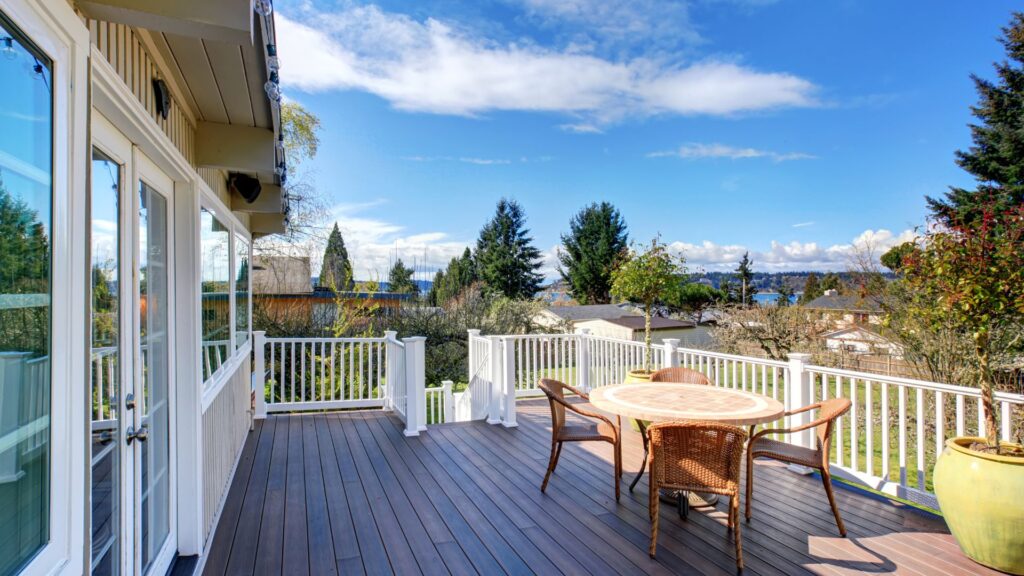
Installation Tips For Composite Decking
Installing composite decking is a straightforward process, but getting it right requires attention to detail. Whether you’re a DIY enthusiast or considering professional help, understanding the steps involved and key factors that ensure a quality finish can save time, money, and frustration in the long run.
Typical Installation Process for Composite Decking
The first step in installing composite decking is preparing the area. This includes leveling the ground and ensuring proper drainage, as composite decks, like any outdoor structure, require a solid and well-drained foundation. Once the foundation is set, you’ll install a framework, often made of pressure-treated wood or metal, to support the composite boards.
Next comes laying the composite decking boards. Start by ensuring you leave adequate spacing between the boards, as composite materials can expand and contract with temperature changes. Most manufacturers recommend a gap of about 5-6mm between boards for optimal ventilation and movement. Fasteners or clips are used to secure the boards to the frame, keeping the deck looking sleek without visible screws on the surface. It’s essential to follow the manufacturer’s instructions for the specific type of fasteners required to avoid damaging the boards.
DIY vs. Professional Installation: Which is Best?
When it comes to installation, you may be torn between tackling the project yourself or hiring a professional installer. Both options have their pros and cons.
DIY Installation can be a cost-saving approach, especially if you already have some basic carpentry skills. It allows you to take your time and work at your own pace, potentially saving money on labor costs. However, composite decking installation requires precision. Incorrect spacing, improper fastening, or poor alignment can lead to future problems like warping, shifting boards, or drainage issues. DIY projects may also take longer if you are unfamiliar with the process, and mistakes can be costly to fix later.
Professional Installation ensures the job is done efficiently and correctly from the start. Professionals bring experience and knowledge of local building codes, ensuring your deck is both structurally sound and aesthetically pleasing. While this option involves higher upfront costs due to labor, it offers peace of mind and often comes with warranties for both the materials and the installation. Hiring a professional is ideal if you’re looking for a polished result with minimal hassle and guaranteed durability.
Tips for Ensuring a Smooth Installation
Whether you decide to go DIY or professional, there are several tips to keep in mind to ensure a smooth installation
- Proper Ventilation: Composite decking needs sufficient airflow to prevent moisture buildup beneath the deck. Proper ventilation helps extend the life of your deck by reducing the risk of mold or mildew developing in damp conditions. Make sure there is adequate space beneath the decking to allow for good air circulation.
- Ensure Correct Spacing: Composite boards can expand and contract due to temperature fluctuations. Follow the manufacturer’s recommendations for spacing between boards to avoid buckling or gaps as the seasons change. Adequate spacing also helps with water drainage, preventing pooling or damage to the boards.
- Securing Fasteners Properly: The type of fasteners used is crucial for the structural integrity of your deck. Many composite decking systems use hidden fasteners for a clean, polished look. It’s important to secure fasteners according to the manufacturer’s guidelines to avoid over-tightening or under-securing the boards, which can lead to movement or damage over time.
- Take Note of Board Orientation: Composite boards often have a directional grain pattern. Installing boards with the grain facing inconsistently can create a patchy look. Pay attention to the grain direction as you install, ensuring consistency for a uniform finish.
Common Mistakes to Avoid During Installation
Even with careful planning, mistakes can happen. Avoid these common pitfalls to ensure a trouble-free installation.
- Improper Spacing Between Boards: One of the biggest mistakes in composite decking installation is incorrect spacing. Failing to account for expansion and contraction can lead to boards warping or buckling. Always follow manufacturer guidelines on spacing, both between boards and between the deck and any adjacent walls or structures.
- Skipping the Foundation Prep: Installing composite decking on uneven or poorly drained ground can cause structural issues down the line. Take the time to prepare a level and well-drained base before starting the installation.
- Using the Wrong Fasteners: Composite decking requires specific fasteners designed to work with its material properties. Using regular wood screws can cause the boards to crack or damage over time. Always use fasteners recommended by the decking manufacturer to ensure a secure and long-lasting installation.
- Neglecting the Slope for Water Drainage: When installing the deck, ensure there’s a slight slope away from any structures to allow water runoff. Failing to do this can cause water to pool on the surface, potentially leading to mold, mildew, or damage to the boards.
By following these tips and avoiding common mistakes, you’ll be well on your way to enjoying a beautiful, long-lasting composite deck that enhances your outdoor space. Whether you choose to do it yourself or hire a professional, a well-executed installation is key to maximizing the durability and visual appeal of your composite decking.
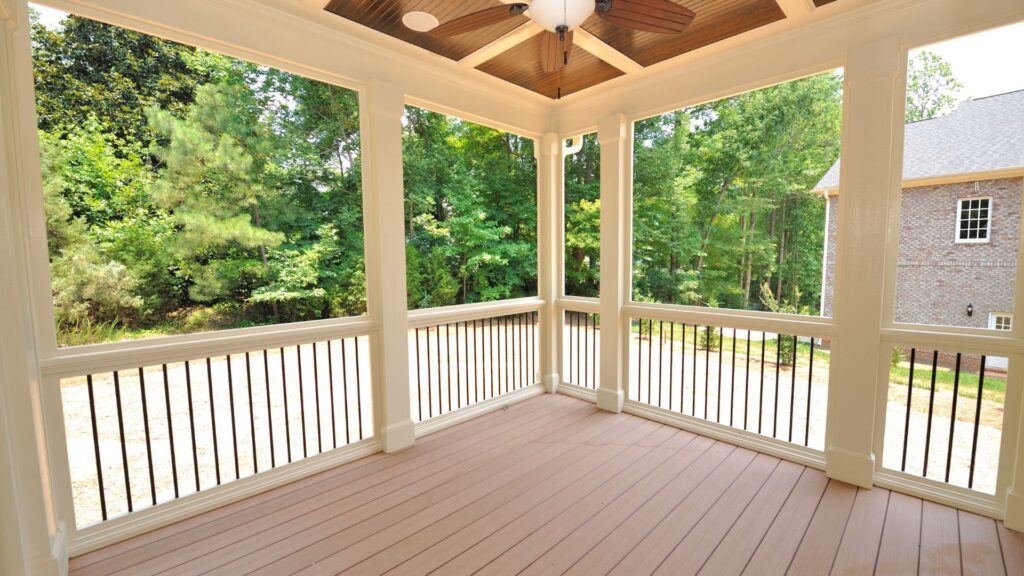
Maintaining Composite Decking
Composite decking is well-known for being low-maintenance compared to traditional wood decking, making it a popular choice for New Zealand homeowners. While it doesn’t require the frequent staining, sealing, or sanding that timber does, there are still some essential maintenance practices to follow to keep your composite deck looking its best for years to come.
Cleaning Routine
One of the major advantages of composite decking is how easy it is to clean. Unlike wood, which can absorb stains and discolor over time, composite materials are resistant to most common outdoor spills and dirt. Cleaning your deck is simple and requires only basic supplies—soap, water, and a soft-bristle brush. Here’s how to maintain your composite deck.
1. Sweep Regularly: Start by sweeping away debris such as leaves, dirt, and twigs. This prevents buildup in the gaps between the boards, which can lead to mold or mildew growth if left unchecked.
2. Soap and Water Solution: Mix a mild soap or deck cleaner with water in a bucket. Apply this solution to the deck surface using a mop or soft brush.
3. Gently Scrub: Use a soft-bristle brush to scrub the deck surface, paying attention to any stubborn spots or spills. Avoid using harsh tools like metal scrapers or wire brushes, as these could damage the surface of the decking.
4. Rinse Thoroughly: After scrubbing, rinse the deck with a garden hose to remove any soap residue. Let it dry naturally in the sun.
This routine can be done every few months or more frequently if needed, depending on the amount of foot traffic or exposure to the elements. Keeping the surface clean not only maintains the aesthetic of your deck but also prevents the buildup of dirt that could eventually damage the material.
Seasonal Maintenance Tips
New Zealand’s weather can be unpredictable, ranging from hot summers to wet, cold winters. Fortunately, composite decking is built to withstand these varying conditions, but some seasonal maintenance is still recommended.
Spring/Summer
As the weather warms up, it’s a good idea to give your deck a thorough cleaning to prepare for increased use. During this time, inspect the deck for any signs of wear or tear, although it’s unlikely with composite materials. If your deck is in a sunny area, consider adding shade or protective measures to prevent excessive fading over time, though high-quality composite decking is UV-resistant.
Autumn
With leaves falling in autumn, it’s crucial to regularly sweep the deck to avoid organic matter accumulating in the cracks. Left unchecked, this debris can lead to moisture retention and promote mold growth.
Winter
New Zealand’s wet winters are a real test for outdoor materials, but composite decking holds up well. Still, it’s important to take precautions.
- Avoid pooling water: Ensure that water doesn’t pool on the surface. If your deck isn’t sloped or if there are drainage issues, this could lead to water damage over time.
- Remove snow or ice: While snow isn’t common in most parts of New Zealand, if your area experiences frost or ice, use a plastic shovel rather than a metal one to avoid scratching the deck surface.
By taking small, regular steps during each season, your composite deck will stay in good condition, regardless of the weather.
Avoiding Common Issues
Though composite decking is more resilient than wood, there are still a few common issues to be aware of, particularly mold and mildew. Moisture is often the culprit behind these problems, especially in areas with high humidity or where water tends to accumulate to prevent mold and mildew.
- Ensure proper airflow: If there’s not enough space between the deck boards, airflow can be restricted, leading to trapped moisture. Make sure your deck was installed with the proper gaps between boards.
- Regular cleaning: As mentioned earlier, keeping the deck clean from organic material such as leaves and dirt is key to avoiding mold growth. Regular cleaning also prevents small particles from settling into the material.
- Use a mold cleaner if necessary: If mold or mildew does appear, use a specialized cleaner for composite decking to address the issue without damaging the surface.
By following these steps, you can prevent these issues from becoming long-term problems, ensuring your deck remains clean and safe.
Composite Decking vs. Traditional Wood: Long-Term Maintenance
When comparing composite decking to traditional wood, one of the biggest advantages is the minimal maintenance required. Wood decking requires regular upkeep—staining, sealing, and sanding—to keep it from warping, splintering, or rotting over time. Even with this effort, timber decks are still more vulnerable to the elements, especially in New Zealand’s wet and humid climate.
In contrast, composite decking is designed to resist the common issues that plague wood, such as moisture absorption, rot, and insect damage. It doesn’t splinter, warp, or fade as quickly as wood, meaning that once it’s installed, you won’t need to spend time and money on annual treatments. This makes it a more cost-effective option in the long run, despite the higher upfront cost.
In terms of longevity, composite decking easily lasts 25-30 years or more with proper care, whereas wood decking may need to be replaced or heavily repaired after 10-15 years of exposure. For homeowners looking for a long-term, hassle-free investment, composite decking is a clear winner.
Maintaining composite decking is easy and requires significantly less effort than wood decking. With a regular cleaning routine, seasonal maintenance, and proactive prevention of common issues like mold, your composite deck can stay in excellent condition for decades, all while providing an attractive and durable outdoor space for your home.
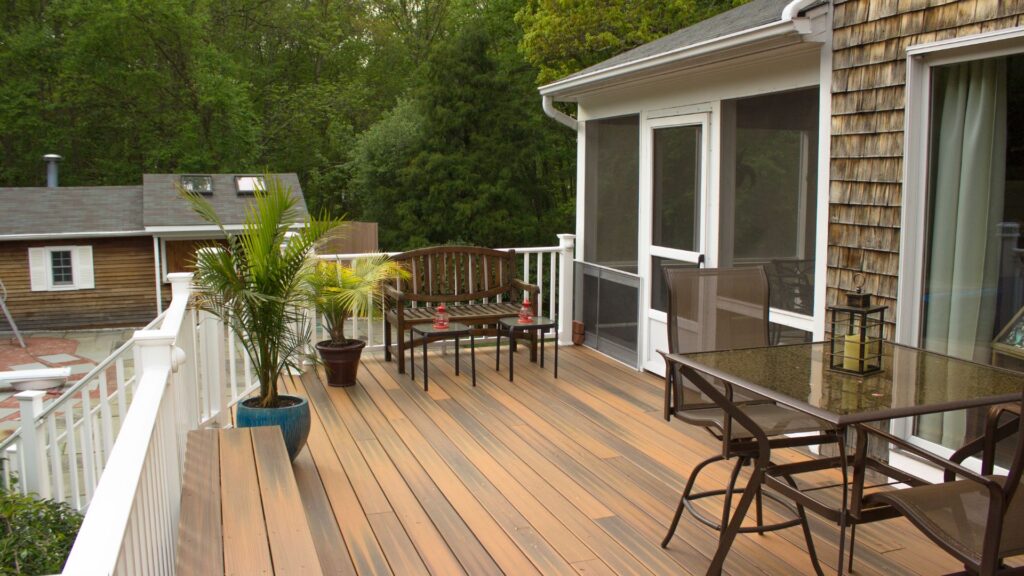
Real-Life Examples: Composite Decking Projects In NZ
When it comes to transforming outdoor spaces in New Zealand, composite decking has emerged as a game-changer for homeowners who prioritize durability, aesthetics, and low maintenance. Across the country, we’ve seen stunning examples of how Kiwi homeowners have embraced composite decking to elevate their patios, pool areas, and gardens. In this section, we’ll showcase several real-life projects, providing insights into why homeowners made the switch and how it has impacted their outdoor living experience.
Stunning Composite Decking Patio in Auckland
One homeowner in Auckland recently revamped their backyard patio using composite decking, and the results have been nothing short of impressive. Living in a city known for its changeable weather, they were tired of the constant upkeep required with traditional timber decking. Rain and humidity had caused their old deck to warp and deteriorate over the years. After considering their options, they chose a sleek, dark-colored composite decking that complemented their modern home exterior.
The installation took just a few days, and the homeowner was delighted by how seamlessly the deck integrated with their outdoor furniture and landscape design. Now, they enjoy a beautiful, low-maintenance space that’s perfect for outdoor entertaining, no longer having to worry about regular staining or sealing. The new deck has become a focal point of their backyard, providing a comfortable, stylish area for hosting friends and family.
Durable Poolside Deck in Tauranga
Another standout example comes from a family in Tauranga, who were searching for a decking solution to surround their new swimming pool. With young children running around, safety and durability were their top priorities. Traditional timber decks often become slippery when wet, and splinters were also a concern. After researching options, they opted for composite decking with a textured, slip-resistant surface.
The family chose a light gray color that complemented their pool’s blue tiles and gave their backyard a fresh, coastal feel. Not only does the composite decking withstand constant exposure to water and UV rays, but it also stays cool underfoot, even on the sunniest days. The family is thrilled with the results and notes that the deck has significantly enhanced their poolside experience. They can now enjoy worry-free summer days with their children, without the stress of ongoing deck maintenance or safety concerns.
Eco-Friendly Garden Platform in Wellington
In Wellington, a homeowner who was passionate about sustainability sought to create an eco-friendly outdoor space using recycled materials. After learning about the environmental benefits of composite decking—many brands use recycled wood fibers and plastics—they decided to install a garden platform made entirely of eco-friendly composite boards.
The homeowner used the platform to create a peaceful retreat in their garden, complete with potted plants, a small seating area, and a pergola for shade. The composite decking not only fits their eco-conscious lifestyle, but it also adds a contemporary touch to the garden. The platform has become the perfect spot for morning coffee and relaxation. Knowing that their decking choice reduces their environmental footprint is a bonus for this sustainability-minded homeowner.
Multi-Level Decking for Outdoor Entertaining in Christchurch
In Christchurch, a homeowner decided to maximize their outdoor space by installing a multi-level composite deck. Their goal was to create distinct zones for dining, lounging, and grilling, making it the ultimate outdoor entertainment hub. With a growing family, they needed a solution that was both durable and versatile.
The composite decking they chose has a rich, wood-like texture, which brings warmth and character to the outdoor area while requiring minimal maintenance. The various levels of the deck create a sense of flow and functionality, allowing the family to enjoy different activities at the same time. From family barbecues to casual evenings spent lounging under the stars, the deck has become the centerpiece of their home’s outdoor space.
The homeowner reports that composite decking was the ideal choice due to its longevity and ease of care. It has significantly reduced the time and cost associated with maintaining a wooden deck, leaving them more time to enjoy their outdoor oasis.
Design Ideas for Outdoor Living Spaces with Composite Decking
Whether you’re thinking of upgrading your patio, pool area, or garden, composite decking offers a wide range of possibilities to suit any outdoor space. Here are a few design ideas inspired by the real-life projects we’ve highlighted.
- Patios: Composite decking can give your patio a modern, polished look while being practical for outdoor dining and lounging. Consider choosing a color that complements your home’s exterior and outdoor furniture for a cohesive design.
- Poolside Decks: If safety and durability are concerns, composite decking is an excellent choice. Opt for a slip-resistant finish and lighter shades to keep the deck cool underfoot in the summer.
- Garden Platforms: Create a tranquil garden retreat using composite decking. Its resistance to moisture makes it ideal for gardens, where it can be surrounded by plants and used to elevate seating areas or walkways.
- Multi-Level Decks: For larger outdoor spaces, multi-level composite decking can help define different areas, such as a dining zone, a lounging area, and an outdoor kitchen. This approach maximizes space and adds visual interest to your backyard.
In each of these examples, composite decking not only enhanced the aesthetic appeal of the space but also offered practical benefits like low maintenance, safety, and environmental friendliness. Whether you’re planning a small garden platform or a large entertainment deck, composite decking can be a durable and stylish solution for New Zealand homes.
These real-life examples from across New Zealand show just how versatile and effective composite decking can be, offering homeowners a beautiful, functional space that will stand the test of time in any climate.
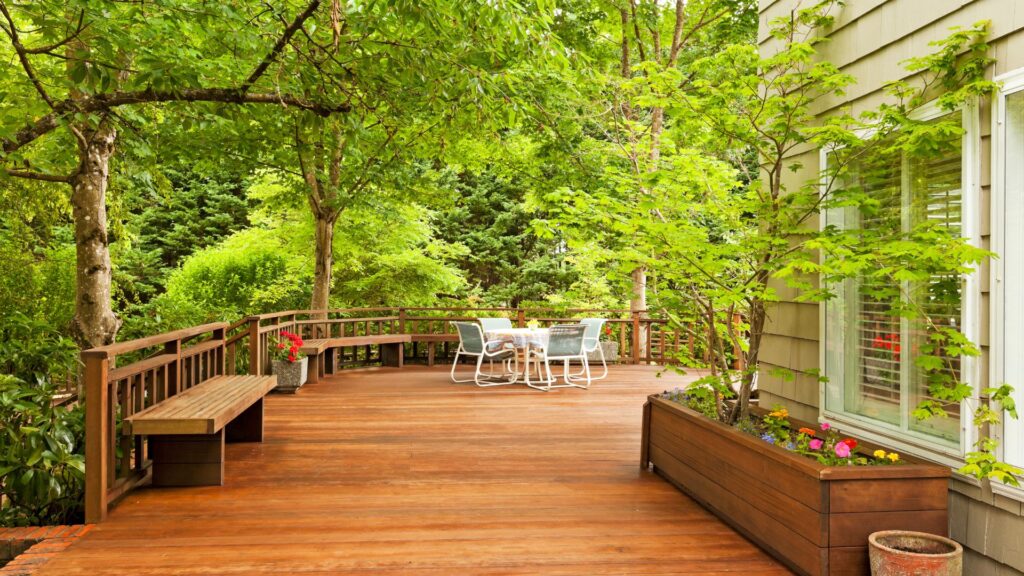
Is Composite Decking Right For You?
When deciding whether composite decking is the right choice for your home, it’s important to weigh the key benefits and potential trade-offs. Composite decking offers a number of advantages that make it an attractive option for many homeowners in New Zealand, but like any material, it may not be perfect for every situation.
Key Benefits of Composite Decking
One of the most significant advantages of composite decking is its durability. Unlike traditional timber, composite decking is designed to resist the elements, including New Zealand’s often unpredictable weather conditions. It won’t rot, warp, or splinter over time, which means it typically has a longer lifespan than timber decking. This durability is particularly appealing for homeowners who want a long-lasting, low-maintenance outdoor space that looks great year after year.
Another major benefit is the low maintenance nature of composite decking. Traditional wood decking requires regular upkeep, such as staining, sealing, and treating for pests or mold. In contrast, composite decking requires minimal maintenance—usually just a simple clean with soap and water. This can save significant time and effort over the years, making it an ideal choice for busy homeowners who don’t want to spend weekends maintaining their deck.
Composite decking is also an eco-friendly option. Many composite products are made from recycled materials, such as reclaimed wood fibers and plastic, which helps to reduce environmental impact. By choosing composite decking, you’re contributing to sustainability efforts and reducing the demand for virgin timber. For homeowners who are environmentally conscious, this is a major selling point.
Additionally, composite decking comes in a wide range of design options. Whether you want a sleek, modern look or something that mimics the natural grain of timber, there’s a composite product that can meet your aesthetic needs. The versatility in color and texture allows you to customize your deck to perfectly complement your home’s exterior and your personal style.
Trade-Offs of Composite Decking
While composite decking offers many benefits, it’s important to consider the trade-offs as well. One of the primary concerns for many homeowners is the initial cost. Composite decking tends to be more expensive upfront compared to traditional timber. However, when you factor in the reduced maintenance costs and the longer lifespan, composite decking can actually be more cost-effective in the long run.
Another potential drawback is the look and feel. While composite decking has come a long way in mimicking the appearance of natural wood, some homeowners still prefer the authentic feel of timber underfoot. If the natural aesthetic of wood is a top priority for you, composite decking might not fully satisfy that preference, though many brands offer highly realistic wood grain finishes.
In terms of installation, composite decking can be slightly more complex to install than wood. While many DIY enthusiasts can install timber decks, composite decking often requires specialized tools and skills, especially when it comes to spacing and fastening. This means that professional installation might be necessary, adding to the overall cost of the project.
Final Thoughts: Why Composite Decking is an Excellent Choice for NZ Homeowners
For New Zealand homeowners, composite decking is a smart investment, especially if you’re looking for long-term value, low maintenance, and durability. With its resistance to the elements and minimal upkeep, it’s perfect for New Zealand’s diverse climates, from the humid coastal areas to the cooler inland regions. The eco-friendly aspect also makes it an appealing choice for those who are conscious about their environmental impact.
Furthermore, the aesthetic versatility of composite decking allows you to create an outdoor space that complements your home and reflects your personal taste. Whether you’re planning a large entertainment deck or a cozy patio, composite decking offers a durable, attractive, and low-maintenance solution that adds value to your property.
Assessing Your Needs
Before making a final decision, take some time to assess your specific needs and priorities. Consider factors such as your budget, how much time you’re willing to spend on maintenance, and the overall aesthetic you want to achieve. If you’re looking for a hassle-free, long-lasting, and environmentally friendly decking option, composite decking should be at the top of your list. It provides the perfect balance of beauty and practicality, making it an excellent choice for any outdoor project in New Zealand.
If you value long-term cost savings, low maintenance, and a deck that stands up to the elements, composite decking is likely the right choice for you.
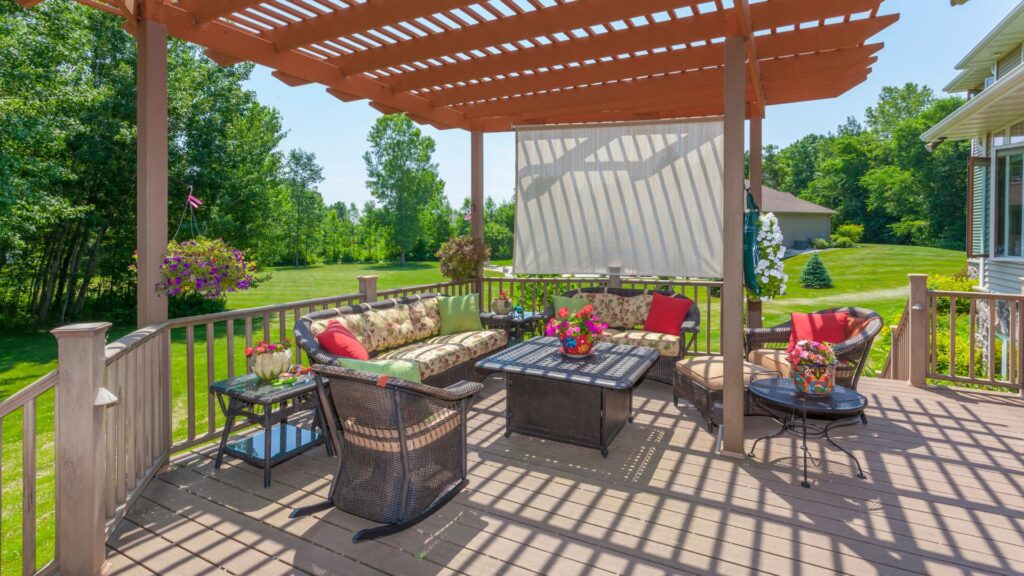
FAQs: About Composite Decking NZ
Conclusion
In conclusion, composite decking in New Zealand offers homeowners a durable, low-maintenance, and eco-friendly solution for enhancing their outdoor spaces. With its ability to withstand the harsh NZ climate, composite decking stands out as a long-lasting alternative to traditional timber, requiring less upkeep and providing better resistance to rot, mold, and fading. Its environmentally-friendly composition, often made from recycled materials, also adds to its appeal for those looking to make sustainable choices. While the initial cost may be higher, the long-term savings on maintenance make it a cost-efficient option for many homeowners. If you’re considering composite decking for your home, now is the perfect time to explore local suppliers, request a quote, or consult a decking expert to ensure you choose the best product for your specific needs and design preferences. Check out Composite Decking Suppliers NZ for a range of products and expert advice to help you make the right choice.. Make the most of your outdoor space with a decking solution that combines practicality, style, and sustainability.
Find A Professional Decking Company Near You!
- Balcony Construction Christchurch
- Deck Builders Alexandra
- Deck Builders Alexandra, Clyde & Cromwell
- Deck Builders Auckland
- Deck Builders Central Otago
- Deck Builders Christchurch
- Deck Builders Clyde
- Deck Builders Cromwell
- Deck Builders Hamilton
- Deck Builders Hawkes Bay
- Deck Builders Invercargill
- Deck Builders Kapiti Coast
- Deck Builders Kerikeri
- Deck Builders Lower Hutt
- Deck Builders Nelson
- Deck Builders New Plymouth
- Deck Builders Paihia
- Deck Builders Palmerston North
- Deck Builders Porirua
- Deck Builders Queenstown
- Deck Builders Taupo
- Deck Builders Tauranga
- Deck Builders Upper Hutt
- Deck Builders Wanaka
- Deck Builders Warkworth
- Deck Builders Wellington
- Deck Builders West Auckland
- Deck Staining Palmerston North
About the Author:
Mike Veail is a recognized digital marketing expert with over 6 years of experience in helping tradespeople and small businesses thrive online. A former quantity surveyor, Mike combines deep industry knowledge with hands-on expertise in SEO and Google Ads. His marketing strategies are tailored to the specific needs of the trades sector, helping businesses increase visibility and generate more leads through proven, ethical methods.
Mike has successfully partnered with numerous companies, establishing a track record of delivering measurable results. His work has been featured across various platforms that showcase his expertise in lead generation and online marketing for the trades sector.
Learn more about Mike's experience and services at https://theleadguy.online or follow him on social media:

